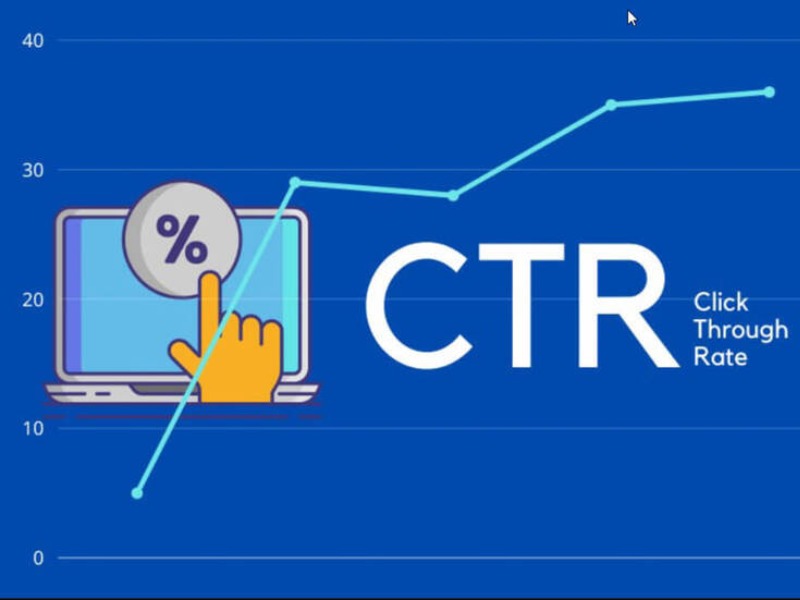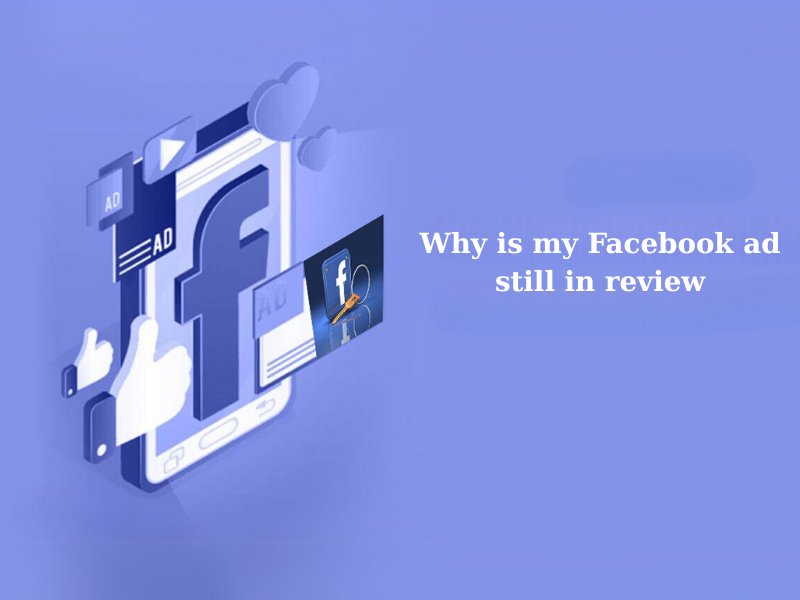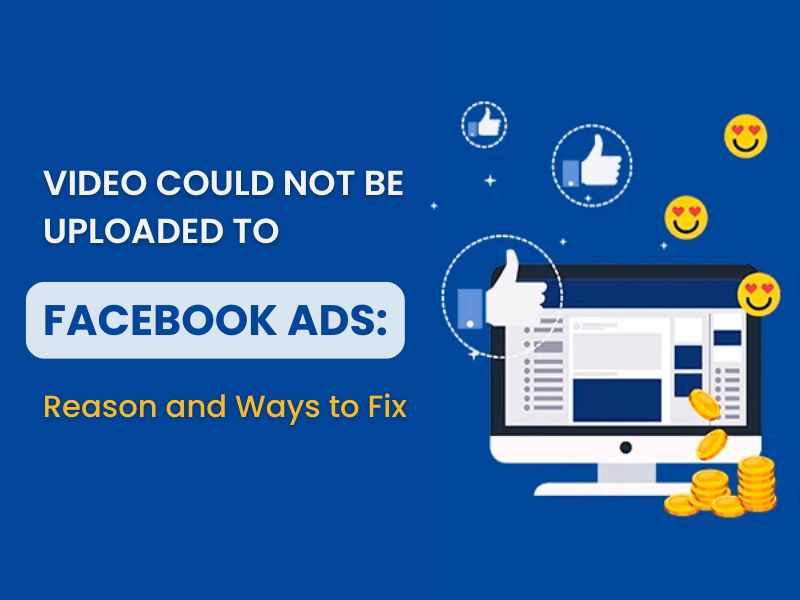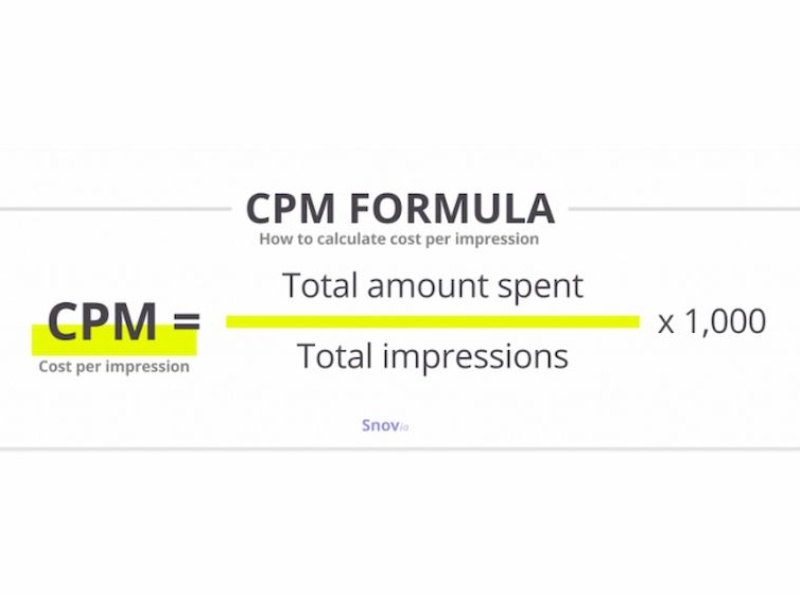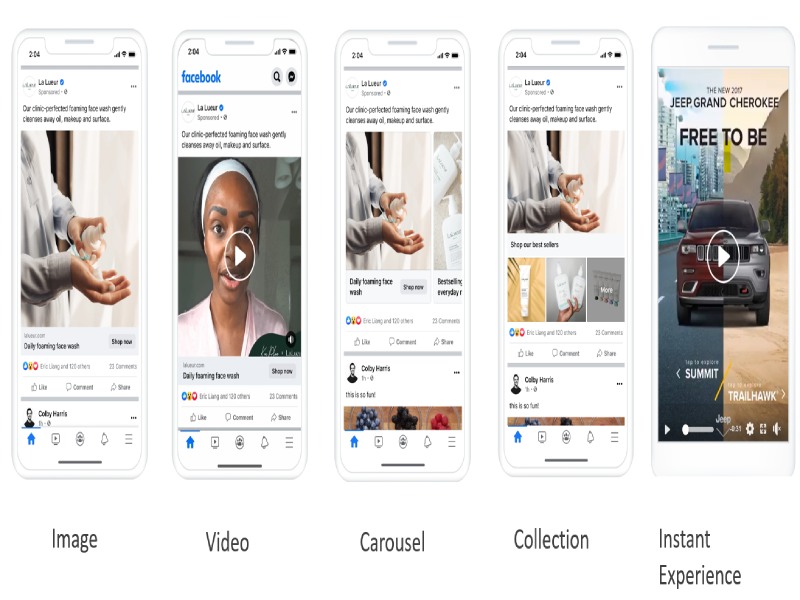To maximize communication effectiveness, you need to choose the type of advertisement that best fits your business and target audience. So between video ads and image ads Facebook, which one is the better choice? Let NEMI Ads walk you through the key differences, benefits, and best practices for using both formats—helping you make the smartest decision for your marketing strategy.
1. Key Takeaways: Video Ads vs Image Ads Facebook
Both image and video ads aim to engage audiences and drive conversions, appearing in similar in-feed positions and offering targeted reach. However, their impact differs significantly.
Video Ads vs Image Ads Facebook show distinct strengths:
Video Ads generally achieve higher engagement rates by capturing attention with motion and sound, making them ideal for storytelling and brand-building.
In contrast, image ads quickly convey messages without requiring significant viewer time, making them better for immediate call-to-action campaigns. However, image ads are generally less expensive to produce.

2. Comparing Video Ads vs. Image Ads Facebook
Below is a table to compare Video Ads vs. Image Ads on Facebook that highlights the key differences in terms of engagement, cost, effectiveness, audience reach, etc.
| Comparing Factors | Video Ads | Image Ads |
| Cost | Higher production and distribution expenses | Typically lower production and distribution costs |
| Reach | Greater potential reach due to engaging content | Potentially limited reach compared to videos |
| Audience | Captivates audiences with longer attention spans | Appeals to audiences with shorter attention spans |
| Engagement | Provides higher engagement, effective as a standalone strategy | Less engaging, may require supplementary tactics |
| Message dept | Offer depth for conveying complex messages | Limited ability to convey complex messages |
| Conversion | Higher potential for conversion with better engagement | Lower conversion rates due to limited engagement |
| Sharing | More shareable, increasing potential for virality | May have lower shareability due to static nature |
Note: All figures as mentioned are approximate only. Costs will vary by industry.
Through the comparison table above, we can easily see the effectiveness of each ads format to choose the smartest format, helping to optimize costs and bring high efficiency to the business.
2.1. Video ads get 6x more engagement than image ads
When selecting an ad format on Facebook, one of the most crucial elements to consider is engagement. In reality, video commercials frequently capture more attention and generate higher interaction than image ads. Below are some specific examples:
- Professional Insight: Research shows that 91% of businesses are using video as a marketing tool, with 76% of marketing leaders agreeing that video helps them reach their goals more effectively than other media types,” says Kevin Windorf, Chief Marketing Officer – North America
- Higher Engagement Rates: According to Edmund Chew Marketing, video ads typically generate engagement levels and interaction rates six times higher than those of image ads. Furthermore, video ads have a 135% higher organic reach compared to image posts, making them a powerful tool for brands looking to maximize their visibility on Facebook.
- Image Ads: While video ads excel in engagement, image ads still hold their ground for delivering quick, clear messages with immediate impact: According to Marketing Specialist, image ads can generate up to 10% more clicks compared to other ad formats when optimized correctly.
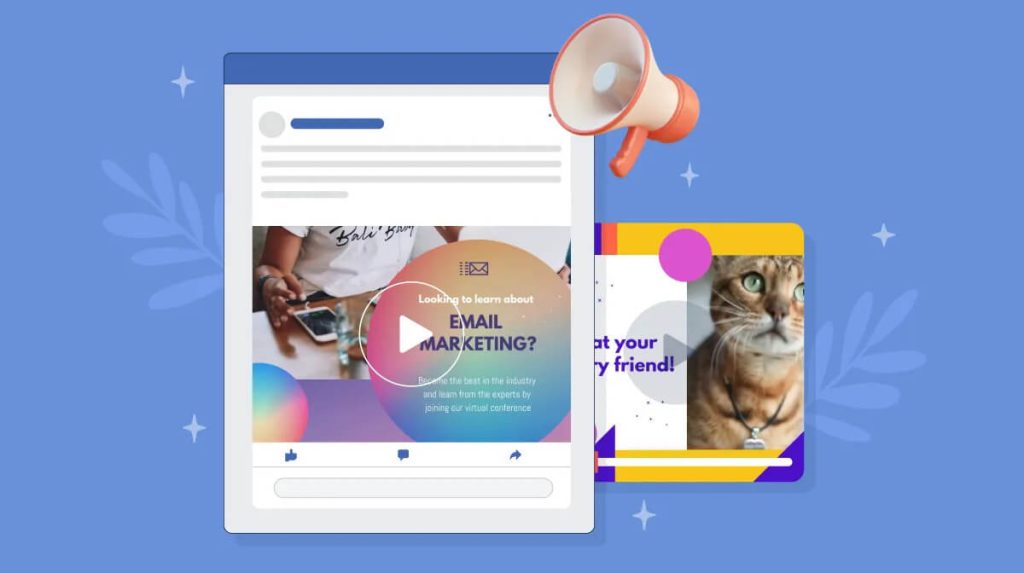
2.2. Image ads cost 30% less per click on average compared to video ads
Several factors influence the cost of creating image ads. The complexity of design, the skill level of the designer, and the use of premium elements like special images can increase costs.
“Despite the higher initial costs, video ads can deliver substantial long-term value by fostering strong brand loyalty and higher engagement rates”, explains Emma Brown, senior analyst at DigitalMarketer.
- Video Ads:
- Video ads generally come with a higher cost per click (CPC) than image ads.
- Video can offer a higher ROI, especially if they capture and retain viewer attention.
- Capturing Attention: Viewers spend 5x longer watching video ads than static content.
- Image Ads: More cost-effective and easier to create:
- Generally less expensive to produce: According to research, image ads are generally less expensive to produce, and research shows that video ads have a cost per purchase that is 24% higher than image ads.
- Cost-effective Solution: For businesses looking to maximize their budget, image ads provide a cost-effective solution that can deliver quick and measurable results,” notes Alex Green, chief marketing officer at BudgetAds.
When it comes to budgeting and execution, weighing the long-term benefits of Video Ads vs Image Ads Facebook can lead to smarter investment decisions.
2.3. Measuring Success: Key Performance Metrics
Understanding how to measure the success of your advertisements is critical in deciding which format is best for your brand. Here, we examine the key performance indicators (KPIs) for both video and image ads.
2.3.1. Key Performance Indicators for Video Advertisements
- View Rate:
The view rate is the percentage of persons who watch the video ad out of all those who saw it. This score assesses how well the advertisement captures and holds viewer attention. According to Search Engine Journal, video content now accounts for 55% of keyword searches, making it a more crucial tool for digital marketers.
Case Study: Travel Alberta’s video ad campaign on Facebook achieved a view rate of 70%, significantly increasing brand awareness and engagement.

- Engagement rate
The engagement rate evaluates how well the material connects with the audience and maintains their interest. This represents the percentage of the video that viewers have seen. According to Emplifi: “A video posted on Facebook receives 135% more organic reach than an image posted on Facebook.”
- Conversions:
Conversions measure an ad’s performance in driving sales or leads. This indicator counts the number of viewers who perform a desired action (such as purchasing or signing up) after viewing the advertisement.
Case study: Dollar Shave Club’s launch video led to 12,000 new customers within 48 hours, showcasing the high conversion efficiency of well-executed video ads.
2.3.2. Image Ad Performance: Essential Metrics to Monitor
When producing picture advertising, focus on three critical performance metrics: click-through rate (CTR), impressions, and conversions:
- Click-Through Rate (CTR)
The click-through rate is the percentage of persons who click on the ad out of those who view it. CTR measures how effective the ad is at prompting viewers to take quick action. According to WordStream, the average CTR for Facebook picture advertising is approximately 0.9%.
- Impressions:
Impressions count the total number of times an ad is displayed, demonstrating its reach and exposure. According to HubSpot reports, picture advertising can get up to 10% more clicks than other ad types when properly designed.

3. When to use Video or Image Ads on Facebook?
The exact goals of your advertising campaign frequently dictate whether you use video or image ads. Choosing between Video Ads vs Image Ads Facebook depends on what you want your audience to do and how you want to communicate your brand message. Here are some strategic applications for both formats:
3.1. 3 Strategic Uses for Video Ads
3.1.1. Storytelling
Storytelling in advertising involves creating a narrative to engage viewers emotionally and convey the brand message effectively. According to HubSpot, 52% of consumers want to see more video content from brands they support. This preference highlights the power of storytelling through video.
3.1.2. Product Demonstrations
Product demonstrations involve showcasing the features and benefits of a product in a visual and interactive manner.
- Video ads are ideal for product demonstrations because they can visually demonstrate how a product works, making it easier for consumers to understand its value.
- Wyzowl’s Video Marketing Statistics 2023 report states that 88% of marketers say video has helped increase user understanding of their product or service.
3.1.3. High-Engagement Campaigns
High-engagement campaigns aim to maximize viewer interaction, such as likes, shares, comments, and time spent watching.
- Video ads are more likely to generate higher engagement rates due to their interactive and captivating content.
- Case Study: Old Spice’s “The Man Your Man Could Smell Like” campaign achieved over 105 million views on YouTube, significantly boosting brand engagement and sales.

3.2. 2 Practical Use Cases for Image Ads
Particularly well-suited for campaigns with simple goals, such as simple promotions, brand awareness, and the transmission of static messaging.
3.2.1. Simple Promotions
Simple marketing includes direct advertising of products or services with a clear call to action. Image advertising is very effective for these campaigns since they are clear and immediate. According to WordStream, picture ads have an average CTR of 0.9%, making them ideal for direct response campaigns.
3.2.2. Brand awareness
Brand awareness programs strive to boost brand recognition and recall among customers. Image ads can be extremely effective in these campaigns, especially if they are visually appealing and individualized.
Case Study: Coca-Cola’s “Share a Coke” used campaign utilized image ads to personalize bottles with names, significantly increasing brand visibility and engagement.
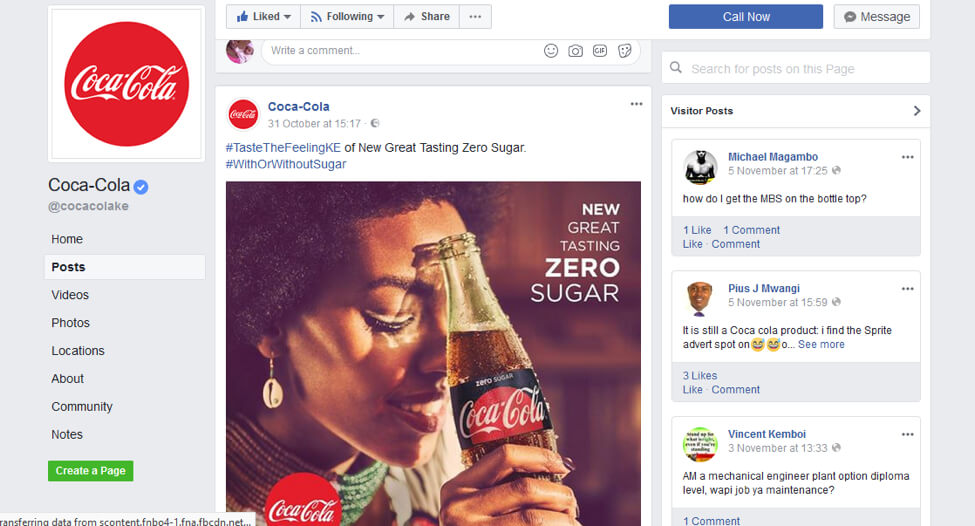
4. Making the Decision: Which Ad Format to Choose?
Finally, whether video or image ads are more effective depends on your advertising objectives. Here are some elements to consider when selecting the best ad format for your campaign:
4.1. Consider Your Objectives
Brand Awareness
Both image and video advertisements are successful at increasing brand awareness. Image advertising conveys a brief, basic message, whereas video ads give a more engaging experience with dynamic content and storytelling, potentially leading to increased audience engagement and brand recall.
Conversions
The decision between picture and video ads is based on your product and message. Image ads are ideal for making simple, straightforward calls to action. Video advertising is best suited for complex items or messages that require comprehensive explanations or demonstrations, resulting in higher conversion rates.
4.2. Understand your audience
Interest
Understanding your audience’s interests is essential for developing relevant adverts. Investigate their hobbies, tastes, and previous interactions with your content. Examine which commercials succeeded best to determine what resonated the most. This allows you to adjust future efforts to fit audience interests, resulting in more engagement and outcomes.
Behavior
Examine how your audience interacts with different sorts of information, such as videos, photographs, and articles. Identify patterns in their activity, such as preferred information formats or best times to engage. Use this knowledge to produce content that is consistent with their behaviors, resulting in increased interaction and efficacy.
4.3. Budget and resources
Video Ads
Video ads typically require a bigger investment in production and creative resources. This includes the costs of scripting, filming, editing, and any special effects or animations. The procedure is time-consuming and frequently entails employing pros to ensure high-quality results, making video ads a more expensive but potentially more entertaining option.
Image Ads
Image ads are more cost-effective and faster to create. They use simplified design approaches, requiring only one visual and some text. This allows for speedier implementation and cheaper expenses, making picture advertising a viable option for campaigns requiring a cost-effective and quick answer.
Realistically, whether image or video ads perform better depends on your advertising goals and the specific needs of your campaign.
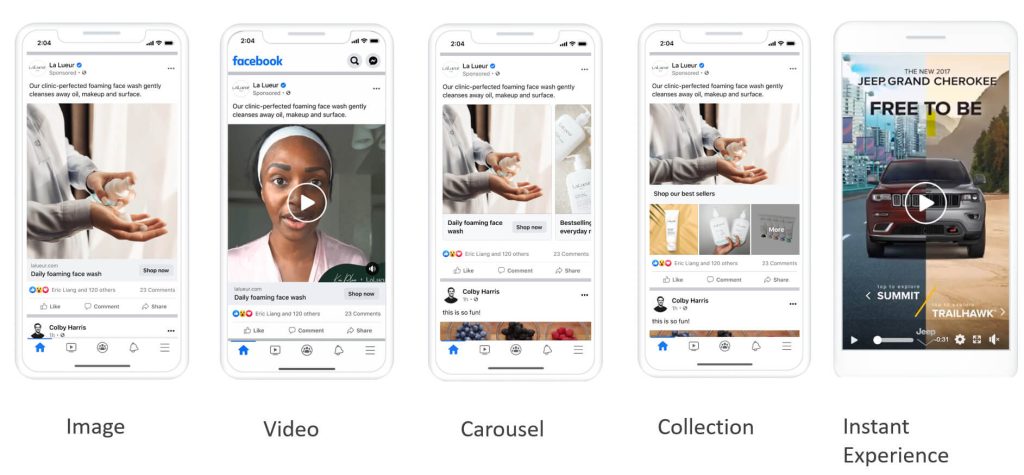
Choosing between Video Ads vs Image Ads Facebook largely depends on your campaign’s specific goals, target audience, and budget. While video ads can drive higher engagement, image ads tend to offer a lower cost-per-click. Each format has its own strengths—and when used correctly, both can significantly elevate the effectiveness of your communication strategy.
Take Your Campaigns to the Next Level
For expert support and unbeatable results in your advertising efforts, contact NEMI Ads today and take your campaigns to the next level with our invoice advertising rental services.



